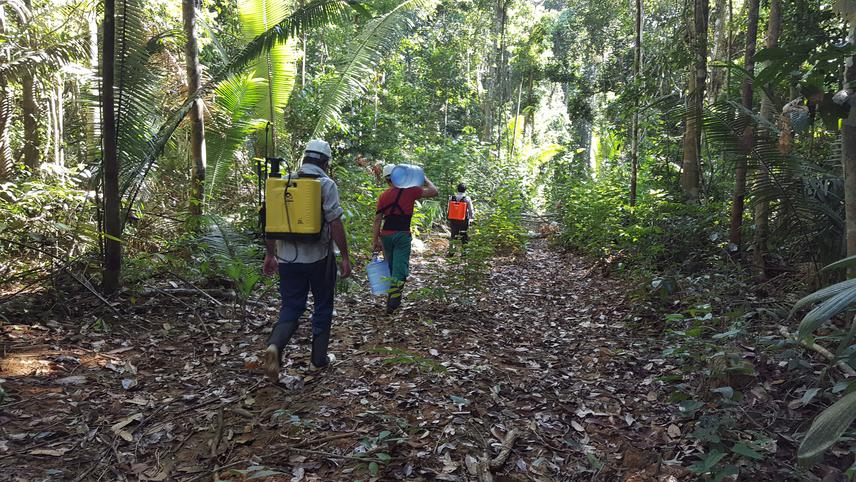Manoela Schiavon Machado
Tropical forests are the most biodiverse and complex ecosystems on Earth, yet they are increasingly threatened by recurrent fires that follow selective logging and are exacerbated by prolonged droughts brought by climate change. Over 50 million hectares of primary, old-growth Amazonian forest — an area twice the size of the UK — has recently been opened for logging that will break the contiguous canopy cover, desiccating the forest. This project will investigate the link between the intensity of selective logging and desiccation and fire risk, to develop management strategies that prevent or reduce fire risk.

The devastating consequences of wildfires for plants and animals in tropical forests are well studied and described in the literature, as is the importance of preventing fires. In addition, logged forests are increasing in the Amazon as a result of the Brazilian government’s decision to open national and state forest reserves to logging concessions. Thus, this research acts exactly on the combination of those two factors to better understand the impacts that selective logging has on the environment of tropical forests to help develop the science behind better management strategies, including recommendations of which areas should and should not be logged, to be implemented by logging companies in a way that prevents the creation of a fire prone landscape, even in the event of prolonged droughts (i.e. El Niño years).
The overall aim of my PhD is to understand the relationship between selective logging intensity and fire risk, and to model it across the Amazon basin. In order to achieve that, my first field season (completed) was dedicated to the collection of thermal data, contributing to our understanding of forest temperature across space and time, which is essential to understanding microclimatic changes in the landscape. The second field season will be dedicated to a flammability experiment. Specifically, this will allow us to link the thermal heterogeneity observed in a logged landscape with desiccation rates and quantities of fuel load found in the logged forest. By connecting these factors and scaling it to the Amazon basin, this research will allow us to make predictions of how land-use practices can affect the risk of fire and therefore what strategies and management actions can be implemented to reduce this vulnerability. From this result, we will work along the logging concession managers and local government so that such strategies get implemented in the Amazon. In addition, this study is an opportunity to bring the community closer to the scientific environment by providing field training to local research assistants, including logging operators, and students from Brazilian Universities.